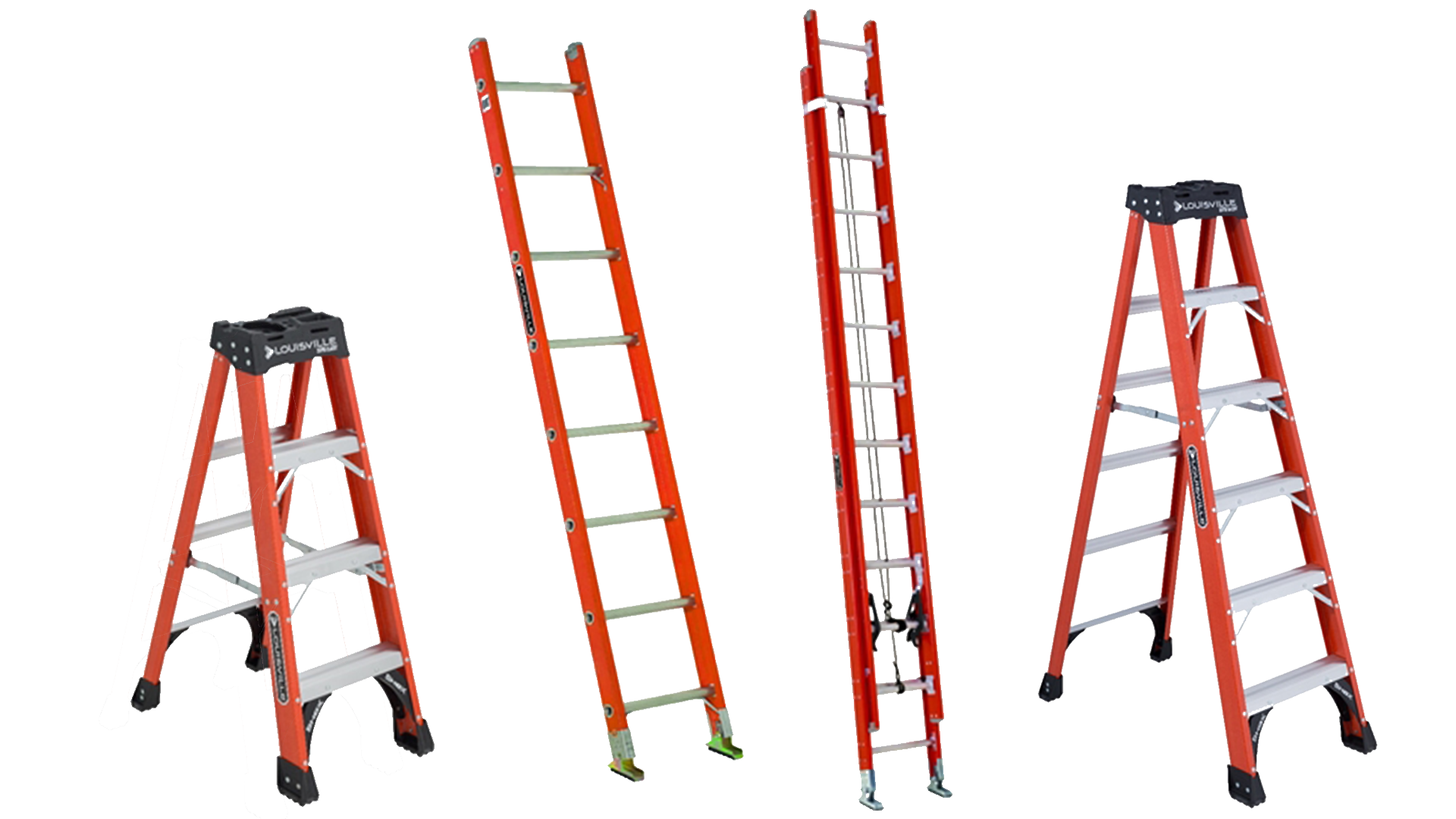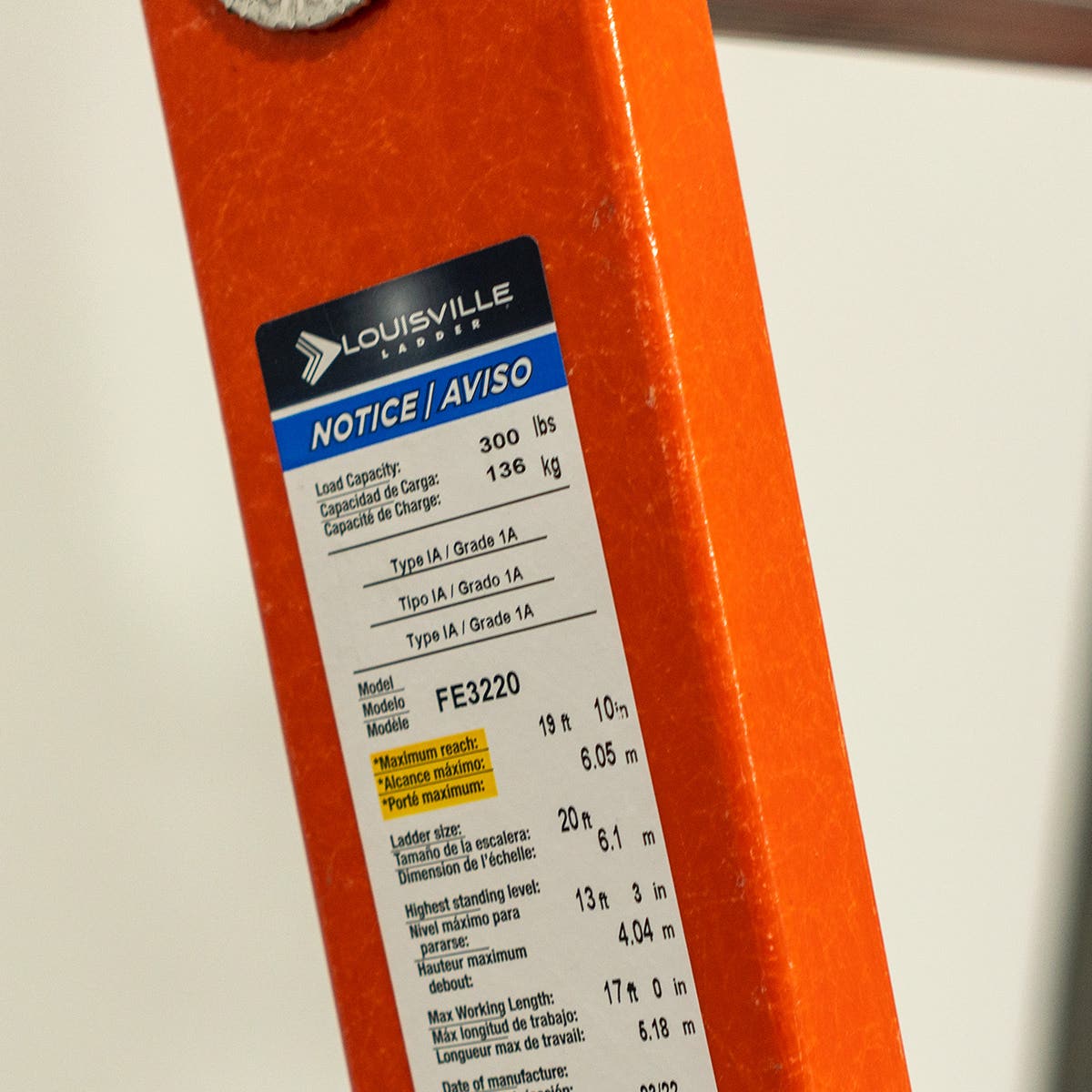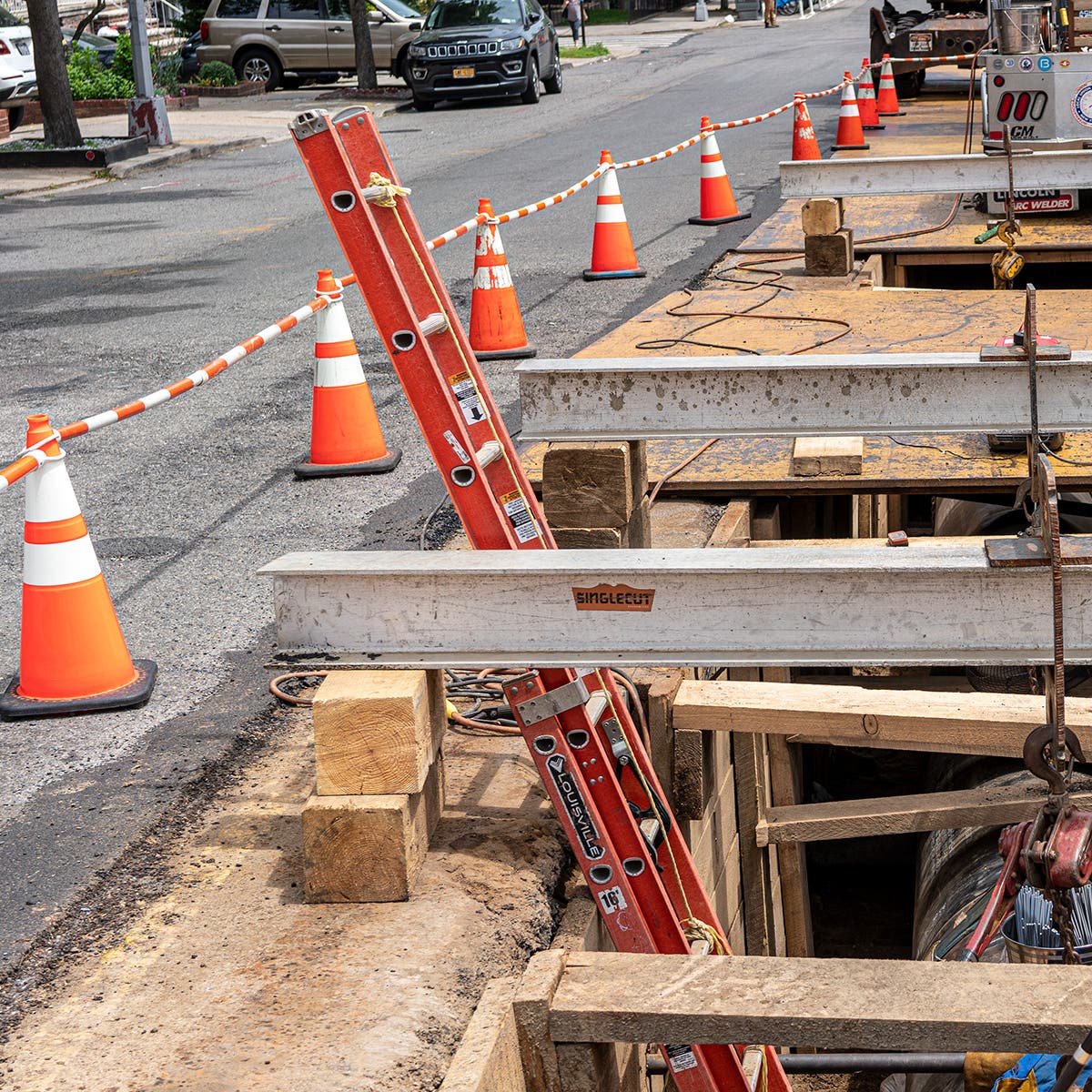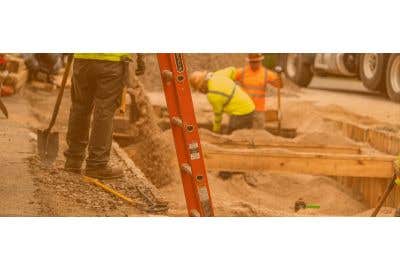*Disclaimer*
The information contained on this page is for promotional and informational purposes only. All equipment should be used by trained professional tradesmen who have been trained how to use the equipment described on this page, and understand the risks of their work. PowerPak assumes no responsibility for errors or omissions in the use or misuse of any product purchased. In no event shall PowerPak be liable for any direct, special, indirect, consequential, or incidental damages or any damages whatsoever, whether in an action of contract, negligence or other torts, arising out of or in connection with the use of this information or the contents of this page. PowerPak reserves the right to make additions, deletions, or modifications to the contents on this page at any time without prior notice.
Why is Ladder Safety Training Needed?
Ladder safety is one of those things that should be embedded in your mind so deeply that you instinctually follow proper safety procedures without even thinking about it.
Unfortunately, years of OSHA statistics tell us that many workers instinctively use ladders incorrectly. It could be due to a lack of knowledge, a lack of proper equipment, or most likely a lack of time. If you take nothing else from this article, take this; the extra time it takes to return to the truck and grab the correct ladder for the job is worth it.
Of the seemingly endless regulations to follow on a work site, ladder safety is one of the easiest not to violate. There are a lot of ladder safety rules, but most of them are common sense and are easy to remember and follow. And over the years, ladder manufacturers have made ladders stronger, lighter, and easier to use, eliminating a lot of excuses you'll hear when preaching ladder safety to your crew.
So, let's dive in and see why ladder safety is one of the top safety topics year after year.
Meeting OSHA Regulations and Preventing Injuries
Every fiscal year OSHA posts a highly anticipated list of the Top 10 Most Frequently Cited Standards. You would be hard-pressed to remember a year where fall protection wasn’t at the top of the list and ladder safety wasn’t somewhere in the top 10 mix, usually in the top 5.
In 2021 alone, ladders accounted for 2,026 official violations, as noted by Occupational Health & Safety. While slightly down from 2,129 reported violations in 2020, ladder violations still jumped up three spots on the list. This means while other violations are significantly decreasing, ladder violations are slow to plummet. These ladder violations are much higher than they should be, especially when considering how preventable ladder injuries are.
OSHA has a long list of standards that you can be fined on, but common violations include;
- 1926.1053(b)(1) Extension ladders must extend a minimum of three feet above the landing.
- 1926.1053(b)(13) Don’t stand on the top step of a ladder.
- 1926.1053(b)(16) Remove broken or damaged ladders from service.
Unfortunately, talking about potential ladder violations with employees does not always convey the impact and importance of ladder safety.
25 Basic Ladder Safety Rules
OSHA has over 80 ladder safety standards that work sites are required to follow, but to get things started, here is a list of 25 basic ladder safety rules that encompass many of the standards and requirements and, most importantly, keeps you safe.
Before doing anything with a ladder, you must start with an inspection.
- All ladders should be free of oil, grease, wet paint, and other potential slip hazards.
- Wood ladders should not be coated in any opaque varnishes.
- Any supporting bracers for the rungs should be unbent and attached properly.
- Regularly dispose of and replace old, damaged, or obsolete ladders.
- Only use a ladder in the manner for which it was designed.
- Choose the appropriate ladder for the task at hand, taking into account the style, height, duty rating, and material.
- Check the feet of the ladder for slip-resistant contact surfaces.
- Always ensure the feet flex and work properly.
Once you've checked your ladder, next, you need to place it properly.
- Do not place the ladder where fluids or potential spills could cause the feet to lose traction.
- Ensure the ladder is set on firm, level footing (if it is an extension ladder, ensure there is rigid support for the top).
- Make sure the ladder is positioned out of the way of pedestrians, doorways, or anything that could bump into it.
- Check for electrical hazards and overhead power lines before handling a ladder.
- If you must work near exposed power lines or energized electrical equipment, only use fiberglass ladders.
- Extension ladders must extend a minimum of three feet above the landing to give workers enough ladder to hold on to while mounting and dismounting.
- Make sure straight ladders and extension ladders are leaning on a sturdy surface, and avoid leaning on windows or crushable facades.
With the ladder inspected and ready to use, you need to follow basic safety practices moving forward.
- Always maintain three points of contact on the ladder. So, two feet and one hand, or two hands and one foot. When reaching for something far away, you may be tempted to take a leg and a hand off the ladder to reach, but it's better to just come down and move the ladder over.
- Never use the top of a stepladder as a step, and the same rule applies to an extension ladder. The top rung is not for standing.
- Don’t climb a closed stepladder.
- Don’t climb up the back of a stepladder.
- Don’t place the base of the extension ladder too close or far from the base of the structure you are using it on. The rule to follow is 4 to 1. You need to place the feet one foot out for every four feet of ladder height. So, a 24-foot climb needs to be set six feet out.
- Stay centered on the ladder – keeping your belt buckle between the vertical rail. To maintain optimal ladder safety, avoid leaning away from the ladder or making sudden movements.
- Understand the maximum load rating of the ladder you are using, and do not exceed it. All ladders must have a sticker or label stating the load limit. Don't remove or cover this label and be sure not to exceed it.
- Ensure that you and your employees review the Basic Ladder Safety rules suggested by the American Ladder Institute.
- Print out the OSHA Quick Card for ladder safety and post it on the job site trailer, where all can easily view it.
- Use your common sense. If it seems like a bad idea, it probably is, and it is always worth the extra time to do the job safely.
While it will not prevent a fall, using an app like Fall Safety can help your team be better prepared for a ladder injury. Falls happen, and when they do, we need to respond quickly. An emergency plan needs to be in place, and workers need to be trained to best provide first aid.
Tech and apps like Fall Safety provide real-time fall detection and alerts so that no worker is left alone in the event of a fall. Responding in the first moments after a fall occurs is critical. Reduced response times increase the chances of a successful rescue and recovery.
Choosing the Right Ladders and Fall Safety Equipment
A ladder should be chosen to perform a specific job, and ladders that are too short should not be used to perform that job. Choosing the right ladder is easy. You just need to answer a few questions.
What style ladder is best for your kind of work?


Extension or straight ladders are ideal for jobs with a secure surface that the ladder can lean on. Generally, extension ladders come in longer lengths and are easy to use when climbing up and getting onto a surface like a roof or a platform.
Step ladders or A-frame ladders are better for situations with nothing to lean up against. They are perfect for open space tasks like changing ceiling fixtures.
What are the different types of ladders?


Ladder-type classifications are based on weight.
- Type III – 200lb max
- Type II – 225lb max
- Type I – 250lb max
- Type IA – 300lb max
- Type IAA – 375lb max
To determine the type needed, take your weight while wearing all of your gear and PPE and add the weight of the heaviest load you expect to carry up/down the ladder at any one time. After adding those numbers together, you need to pick a ladder type based on the total weight.
So, if you are 210lbs fully geared up and expect to carry a 35lb load down into a trench or up onto a roof, you need a Type I at minimum.
How tall of a ladder do you need?


For extension or straight ladders, you should pick a ladder around 10 feet taller than the support point. This will allow you to offset the ladder a safe distance while still leaving enough length to give yourself a minimum of 3ft beyond the landing (if applicable).
When picking a step ladder, you need to make sure you can safely do your work while standing a minimum of two rungs down from the top. A rough rule of thumb is to subtract four feet from the height you want to reach. So, to reach 20 feet, you need a 16-foot ladder. That rule of thumb is based on a 5' 9" person, so adjust accordingly for your height.
What ladder material is right for your work?
When it comes to ladder material, you've got three main options; fiberglass, metal, and wood.
A fiberglass ladder is a great option if the budget allows for it. Fiberglass ladders are non-conductive, so they are great for electrical work. They are durable and resistant to retaining temperature. One drawback is they can get pretty heavy, especially with longer-length ladders.
Metal ladders are most commonly made of aluminum and are good for non-electrical work. These ladders are lightweight, durable, and cost-effective.
Wood ladders are also non-conductive. Wood ladders are good for smaller projects. You'll have to go out of your way to find a very tall a-frame wood ladder or a wood extension ladder. They exist, but they just aren't very popular.
If you can answer those four questions, it becomes easy to pick the exact ladder needed for your work. If you don't have exact answers, always plan for the worst.
Buy Safety Equipment Online
Preventing ladder injuries should be simple, but unfortunately, the rules for ladder safety are often disregarded.
Site safety is something that everyone contributes to. We know that workers may scoff at ladder training, as many of them have likely used ladders for decades. However, this is not an excuse to avoid it altogether.
When you consider the potential hazards, it is worth having an occasional stand-down meeting regarding ladder safety. Even the most experienced users still have accidents.
If your equipment no longer meets the necessary safety requirements, we recommend a replacement to stay compliant with OSHA regulations. Shop Our Extensive Range Of Professional, Heavy-Duty Ladders and Fall Safety Equipment Now and Find the Best Option for Your Jobsite!


